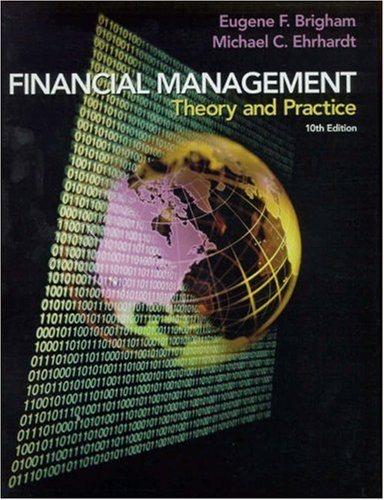
3. Recall from Chapter 4 that the Federal Reserve Bank (FED) influences the money sup- ply through open-market operations, reserv erve requirements, and the discount rate. Open- market operations are the purchases and sales of government bonds by the Fed. If the Fed buys government bonds, the dollars it pays for the bonds increase the monetary base and therefore the money supply. If the Fed sells government bonds, the dollars it receives for the bonds reduce the monetary base and therefore the money supply. Reserve re- quirements are regulations imposed by the Fed that require banks to maintain a minimum reserve-deposit ratio. A decrease in reserve requirements lowers the reserve? deposit ra- tio, which allows banks to make more loans on a given amount of deposits and, therefore, increases the money multiplier and the money supply. The discount rate is the interest rate that the Fed charges banks to borrow funds. Banks may borrow from the Fed if their reserves fall below what is required. A decrease in the discount rate makes it less expen- sive for banks to borrow reserves. Consequently, banks will borrow more from the Fed; this increases the monetary base and therefore the money supply. Furthermore, the model of the money supply in tChapter 4 shows that M = mx B. The money supply M depends on the money multiplier m and the monetary base B. The money multiplier can be expressed in terms of the reserve-deposit ratio rr and the currency- deposit ratio cr, which gives us M This equation shows that the money supply depends on the currency-deposit ratio, the reserve-deposit ratio, and the monetary base. Suppose that an economy has a monetary base of $1,000. Calculate the money supply in the following scenarios. 1+cr x B. rr+cr (a) All money is held as currency. (b) All money is held as bank deposits. In turn, banks hold 100 percent of bank deposits as reserves. (c) All money is held as bank deposits. In turn, banks hold 20 percent of bank deposits as reserves. (d) People hold equal amounts of currency and bank deposits. Banks hold 20 percent of bank deposits as reserves. (e) Extra credit (10 points) The central bank decides to increase the money supply by 10 percent. In each of the above scenarios, how much should it increase the monetary base? 3. Recall from Chapter 4 that the Federal Reserve Bank (FED) influences the money sup- ply through open-market operations, reserv erve requirements, and the discount rate. Open- market operations are the purchases and sales of government bonds by the Fed. If the Fed buys government bonds, the dollars it pays for the bonds increase the monetary base and therefore the money supply. If the Fed sells government bonds, the dollars it receives for the bonds reduce the monetary base and therefore the money supply. Reserve re- quirements are regulations imposed by the Fed that require banks to maintain a minimum reserve-deposit ratio. A decrease in reserve requirements lowers the reserve? deposit ra- tio, which allows banks to make more loans on a given amount of deposits and, therefore, increases the money multiplier and the money supply. The discount rate is the interest rate that the Fed charges banks to borrow funds. Banks may borrow from the Fed if their reserves fall below what is required. A decrease in the discount rate makes it less expen- sive for banks to borrow reserves. Consequently, banks will borrow more from the Fed; this increases the monetary base and therefore the money supply. Furthermore, the model of the money supply in tChapter 4 shows that M = mx B. The money supply M depends on the money multiplier m and the monetary base B. The money multiplier can be expressed in terms of the reserve-deposit ratio rr and the currency- deposit ratio cr, which gives us M This equation shows that the money supply depends on the currency-deposit ratio, the reserve-deposit ratio, and the monetary base. Suppose that an economy has a monetary base of $1,000. Calculate the money supply in the following scenarios. 1+cr x B. rr+cr (a) All money is held as currency. (b) All money is held as bank deposits. In turn, banks hold 100 percent of bank deposits as reserves. (c) All money is held as bank deposits. In turn, banks hold 20 percent of bank deposits as reserves. (d) People hold equal amounts of currency and bank deposits. Banks hold 20 percent of bank deposits as reserves. (e) Extra credit (10 points) The central bank decides to increase the money supply by 10 percent. In each of the above scenarios, how much should it increase the monetary base







